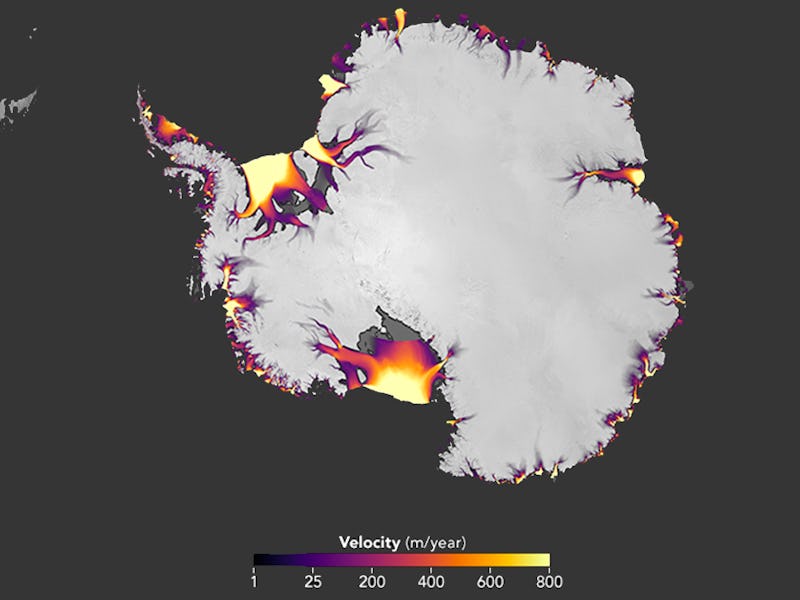New NASA Maps Reveal How Rapidly Antarctica Is Melting Away
It's not looking good.

If the world was a glass of water, Antarctica would be the biggest ice cube floating in it. The southernmost continent is almost completely covered by a thick layer of ice known as the Antarctic ice sheet, which makes up about 90 percent of the world’s ice and 70 percent of the world’s fresh water. But, NASA scientists warned on Tuesday, it might not be that big for long.
With a new computer-vision technique, the NASA scientists created a map that gives the clearest picture yet of just how fast Antaractica’s southern ice shelf is melting away. The research, published in the journal The Cryosphere, suggests that we’re on thin ice.
The melting continent discharged 1,929 gigatons — or one billion tons — of ice in 2015. That’s a 36 gigaton increase from 2008.
Those figures might be hard to picture, so consider that the average male African elephant weighs 6.8 metric tons. So, a single gigaton of ice is roughly equivalent to the weight of hundreds of millions of elephants.
The flow of Antarctic ice, derived from feature tracking of Landsat imagery.
What’s most concerning about these gargantuan blocks of ice is that they will float off from Antarctica and into warmer waters, where they eventually melt and further accelerate sea level rise.
The new software was used to parse through hundreds of thousands of satellite images of Antarctic glacier movement from 2013 to 2015 and, afterward, compared that data to older measurements to reveal the changes outlined in the map. It allowed the researchers to investigate ice flow in parts of the continent that had never even been measured before, like the Getz Ice Shelf. The study revealed the acceleration of ice flow from the southwest coast of the continent.
The most alarming finding, however, was that the East Antarctic Ice Sheet — which largely drains into the Totten Glacier, the biggest and most unwieldy in the continent — has been flowing steadily into the ocean for a long time. Throughout the seven-year study, the researchers observed no change in the rate at which the sheet released ice into the ocean. These figures were never measured before this NASA study.
Glacial calving ice falling into antarctic waters.
“We’ll be able to use this information to target field campaigns, and understand the processes causing these changes,” said the study’s lead author and JPL Earth scientist Alex Gardner, Ph.D., in a statement.
“Over the next decade, all this is going to lead to rapid improvement in our knowledge of how ice sheets respond to changes in ocean and atmospheric conditions, knowledge that will ultimately help to inform projections of sea level change.”